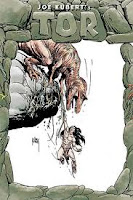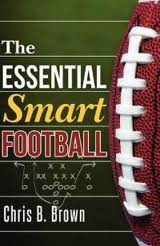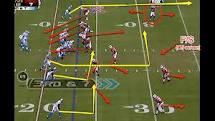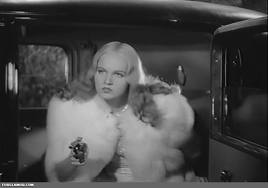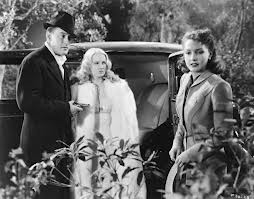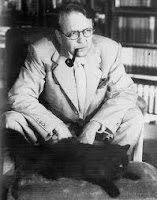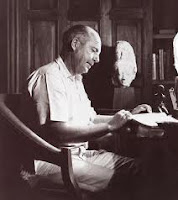 Back in 2001, at the London Film Festival, I interviewed Walter Murch in connection with the UK release of Apocalypse Now Redux, and wrote the following article for the FT, who paid for it and spiked it. It bounced around between sections and pages, but by the time the discussions had finished the LFF was over and Rudux made much less impact on its release than expected, which meant my piece passed its newspaper sell-by date. At one point I was going to expand it for the weekend magazine, which would have been a pleasure because, as it happened, I would bump into Murch around Primrose Hill a couple of times, and have some more brief but fascinating conversations. It was easy to think of him as a kind of monk, keeping an art alive, except that his art is part of something that very much is alive; it's as if his is a sensibility which seems more and more out of step with his business. It's not hard to see echoes of his father, who was a painter, in that approach--like a painter he's amazingly deft at the technology of his art. I pitched something along those lines, but without a new hook, that idea eventually died as well. Oddly enough, more than a decade later, I think the interview holds up on its own, and Murch's career remains as crucial as ever. Somewhere, there's a piece I did on the Touch Of Evil restoration, which was published, and when I find that I'll try to post it here as well. And there's a bigger profile waiting to be written. In the meantime, read on...
Back in 2001, at the London Film Festival, I interviewed Walter Murch in connection with the UK release of Apocalypse Now Redux, and wrote the following article for the FT, who paid for it and spiked it. It bounced around between sections and pages, but by the time the discussions had finished the LFF was over and Rudux made much less impact on its release than expected, which meant my piece passed its newspaper sell-by date. At one point I was going to expand it for the weekend magazine, which would have been a pleasure because, as it happened, I would bump into Murch around Primrose Hill a couple of times, and have some more brief but fascinating conversations. It was easy to think of him as a kind of monk, keeping an art alive, except that his art is part of something that very much is alive; it's as if his is a sensibility which seems more and more out of step with his business. It's not hard to see echoes of his father, who was a painter, in that approach--like a painter he's amazingly deft at the technology of his art. I pitched something along those lines, but without a new hook, that idea eventually died as well. Oddly enough, more than a decade later, I think the interview holds up on its own, and Murch's career remains as crucial as ever. Somewhere, there's a piece I did on the Touch Of Evil restoration, which was published, and when I find that I'll try to post it here as well. And there's a bigger profile waiting to be written. In the meantime, read on... Apocalypse Now begins with sound.
The whirring chop-chop-chop of helicopter rotor-blades fades into
the music of The Doors’ “The End”, then rises again as the
blades dissolve into the ceiling fan, under which Martin Sheen’s
Captain Willard lies grappling with inner demons. It is one of
cinema’s most powerful openings, but, in a supposedly visual
medium, its power arises from sound.
Apocalypse Now begins with sound.
The whirring chop-chop-chop of helicopter rotor-blades fades into
the music of The Doors’ “The End”, then rises again as the
blades dissolve into the ceiling fan, under which Martin Sheen’s
Captain Willard lies grappling with inner demons. It is one of
cinema’s most powerful openings, but, in a supposedly visual
medium, its power arises from sound.
Walter Murch won
an Oscar as ‘sound designer’ of Apocalypse Now (and was nominated
for a second statuette as co-film editor). When director Francis Ford
Coppola wanted quadraphonic sound, it was Murch who came up with the
now-standard 5.1 format, using five speakers, with an additional one
for sub-sonic noises. “We needed explosions to hit you in the gut
as well as the ears,” he says. So when Coppola
decided after two decades that the movie now seemed ‘tame’ and
wanted to return to his vision and the original screenplay, he turned
again to Murch. The result was Apocalypse Now Redux, and at its
London Film Festival premiere the man who redid the Redux explained
that revisiting the two million feet of negative film, stored in
limestone caves for 20 years, was daunting.
“I came on to
the original film after they’d finished shooting, and they’d shot
roughly a 100:1 ratio between film exposed to film used. Even though
I avoided the disasters of the shoot, which are well-known, the edit
carried its own chaos.”
The second time
around, working from the original lined script, the result is a much
different film, less episodic and more flowing. The restored scenes
offer both gains and losses. For example, in the new version, just
after Robert Duvall’s famous paean to napalm‘s odor, Willard and
his boat crew steal Colonel Kilgore’s surfboard. Willard becomes
more human, but Kilgore (Duvall) becomes a less daunting psychopath,
more of a buffoon.  “Kilgore tipped
the balance of the film toward him, away from Kurtz,” says Murch.
“The new scenes balance things in a structural sense.” The
balance is achieved by the new scenes of Marlon Brando’s Kurtz, in
daylight, breaking Willard down and re-educating him. These pull the
final, mythic section of the film back unequivocally to Vietnam.
“Kilgore tipped
the balance of the film toward him, away from Kurtz,” says Murch.
“The new scenes balance things in a structural sense.” The
balance is achieved by the new scenes of Marlon Brando’s Kurtz, in
daylight, breaking Willard down and re-educating him. These pull the
final, mythic section of the film back unequivocally to Vietnam.
 “Kilgore tipped
the balance of the film toward him, away from Kurtz,” says Murch.
“The new scenes balance things in a structural sense.” The
balance is achieved by the new scenes of Marlon Brando’s Kurtz, in
daylight, breaking Willard down and re-educating him. These pull the
final, mythic section of the film back unequivocally to Vietnam.
“Kilgore tipped
the balance of the film toward him, away from Kurtz,” says Murch.
“The new scenes balance things in a structural sense.” The
balance is achieved by the new scenes of Marlon Brando’s Kurtz, in
daylight, breaking Willard down and re-educating him. These pull the
final, mythic section of the film back unequivocally to Vietnam.
Also new is
Willard’s encounter with a French colonial rubber plantation, whose
inhabitants project a ruined colonial grandeur in the face of chaos.
A dinner-table debate provides an Oliver Stone-like historical
sub-text, newly relevant in light of the Afghan war. “The film’s US
run ended before the added burden of present history,” Murch says,
“but there is a certain parallel between the Taliban and the Viet
Minh, both being the results of America’s misguided efforts.” The
scene ends with a beautiful dissolve from a woman behind mosquito
netting to fog on the river which suggests it’s all a dream. “That
was part of the intention. It becomes like Bunuel, a literally
endless dinner conversation. You come out of the dream and arrive at
Kurtz’s nightmare.”
The multi-tasking
which marks Murch’s career arose from the relative freedom of
Coppola’s Zoetrope Studios, away from Hollywood’s restrictions.
You can understand Coppola’s trust, because Murch projects a calm,
the confidence of the master craftsman. But his book about film
editing, In The Blink Of An Eye, reveals a fiercely intellectual
approach, and his work reveals the sensitivity of an improvising
artist . Author Michael Ondaatje watched Murch work on the film of
his novel The English Patient, and concluded editing was “the stage
of film closest to the art of writing”. Not surprisingly in that
context, Murch saw Ondaatje’s novel as first of all a technical
challenge.
. Author Michael Ondaatje watched Murch work on the film of
his novel The English Patient, and concluded editing was “the stage
of film closest to the art of writing”. Not surprisingly in that
context, Murch saw Ondaatje’s novel as first of all a technical
challenge.
 . Author Michael Ondaatje watched Murch work on the film of
his novel The English Patient, and concluded editing was “the stage
of film closest to the art of writing”. Not surprisingly in that
context, Murch saw Ondaatje’s novel as first of all a technical
challenge.
. Author Michael Ondaatje watched Murch work on the film of
his novel The English Patient, and concluded editing was “the stage
of film closest to the art of writing”. Not surprisingly in that
context, Murch saw Ondaatje’s novel as first of all a technical
challenge.
“It’s extremely
complex, with more time transitions than any film made until then,”
he explains. “Sound can make those transitions, like when the
sound of a whistle Hanna (Juliette Binoche) is throwing while playing
hopscotch blends into Arab music in Almasy’s (Ralph Fiennes’)
head, and makes the jump in space and time. But the story also
attracted me from the human point of view; how you take someone who
is objectively evil, and allow the audience to sympathise with him.”
The English Patient won Murch an unprecedented double Oscar for editing and sound
mixing. He’d completed the same double two decades earlier at the
Baftas, on another Coppola picture The Conversation (1975). It’s
a measure of the unique relationship between Coppola and Murch that
the director left the footage, and the editing, of that film in
Murch’s hands while he left to shoot Godfather II, which he’d
agreed to direct in order to finance The Conversation.
“Except Francis
still had two weeks of shooting to go when he stopped shooting,”
Murch recalls. “They’d run out of time, money, and producers, so
about 20 minutes of the script was literally missing, hadn‘t been
filmed. I had to make it work, which we did needing only one extra
shot, a hand pulling a tape off a reel.”
The Conversation
appealed to Murch because it concerns a detective whose specialty is
bugging people; he‘s basically a sound engineer. “I came to film
from sound,” Murch says. “I developed a fascination with tape
recorders in my youth, in the 50s, which was why I was also drawn to
the restoration of Touch Of Evil, because the life of Orson Welles’
character dissolves, literally, because of a tape recorder. He’s
being taped by Charlton Heston, and the echoes of the speaker give
Heston away, then Welles’ reaction leads to his death.”
which was why I was also drawn to
the restoration of Touch Of Evil, because the life of Orson Welles’
character dissolves, literally, because of a tape recorder. He’s
being taped by Charlton Heston, and the echoes of the speaker give
Heston away, then Welles’ reaction leads to his death.”
 which was why I was also drawn to
the restoration of Touch Of Evil, because the life of Orson Welles’
character dissolves, literally, because of a tape recorder. He’s
being taped by Charlton Heston, and the echoes of the speaker give
Heston away, then Welles’ reaction leads to his death.”
which was why I was also drawn to
the restoration of Touch Of Evil, because the life of Orson Welles’
character dissolves, literally, because of a tape recorder. He’s
being taped by Charlton Heston, and the echoes of the speaker give
Heston away, then Welles’ reaction leads to his death.”
Universal Studios
had re-edited and reshot the film after Welles turned in his first
cut. Working from a 58 page memo Welles had sent the studio
executives to express his dissatisfaction with their cut, and with what
extra footage remained, Murch was able to reconstruct a version far
closer to Welles’ intentions for the picture.
“The memo was
astute on both the creative and political levels,” Murch recalls.
“Welles was under no illusions as to who owned the film, but his
approach was ‘I can help you make it better’. It’s
interesting, because on-screen Welles always played moguls, yet he
spent his career battling them.”
Touch Of Evil
brought Murch full circle, because in that film, Welles, who came out
of radio, had used the naturally-occurring source music of the
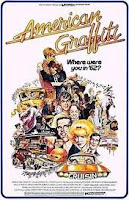 Mexican border town to provide atmosphere. Murch and George Lucas
borrowed the idea to score American Graffiti. The result was the
birth of the soundtrack hits album. “It was innovative
artistically, and commercially,” Murch recalls. “Naturally the
studio, Universal again, was completely resistant to the idea.”
Mexican border town to provide atmosphere. Murch and George Lucas
borrowed the idea to score American Graffiti. The result was the
birth of the soundtrack hits album. “It was innovative
artistically, and commercially,” Murch recalls. “Naturally the
studio, Universal again, was completely resistant to the idea.”
 Mexican border town to provide atmosphere. Murch and George Lucas
borrowed the idea to score American Graffiti. The result was the
birth of the soundtrack hits album. “It was innovative
artistically, and commercially,” Murch recalls. “Naturally the
studio, Universal again, was completely resistant to the idea.”
Mexican border town to provide atmosphere. Murch and George Lucas
borrowed the idea to score American Graffiti. The result was the
birth of the soundtrack hits album. “It was innovative
artistically, and commercially,” Murch recalls. “Naturally the
studio, Universal again, was completely resistant to the idea.”
Murch also co-wrote
THX 1138 with Lucas, and has written two other films, one of which,
Return To Oz, he directed. Does he want to direct more? “No, I’m
happy doing what I do.” he says. Given all he does, and how well
he does it, you believe him.


